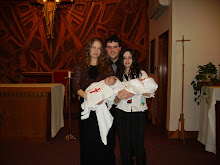I can See the light !
Last week something amazing happened in the field of astronomy. For the first time ever, man has directly detected an extrasolar planet. Although we have been able to detect these planets for some time now, we have only been able to do this indirectly through two methods. The first is known as the "Wobble" method. Picture yourself holding hands with another person and spinning each other around. You both would spin around equally. Now picture yourself holding a very small child and spinning him or her around. The small child would spin around in a big circle but you would only wobble slightly. This is the same with our sun, Jupiter which is our largest planet, makes out sun wobble, ever so slightly. So they use this method to look at other stars. If the star has a consistent wobble, they can measure that wobble and tell the mass of the planet as well as orbit without actually seeing the planet. The other method is the "Transit" method. This method measures the amount of light emitted by a star. As the planet passes in front of the star. The amount of light that the star emits is ever so slightly decreased, so if they see the star light decrease with a regular pattern, then they know there is a planet rotating around it. Using the transit method is only good for seeing planets that orbit extremely quickly (like every 15 days or less). Imagine trying to detect an earth like planet this way. The light would only decrease every 365 days, so it would be pretty much impossible. Both methods are only good for detecting very large planets (Gas giants such as Jupiter)
Anyway NASA has focused the Spitzer telescope (infared), on two known planets and actually detected the heat emitted from the actual planet. The actual pictures are not very impressive to look at but are very exciting non-the-less. If you would like to check out and artist rendering with animation, go to the Spitzer web sitehttp://www.spitzer.caltech.edu/spitzer/index.shtml
There are telescopes in the works that will be able to detect the actual light from these planets very soon, so stay tuned.
Anyway NASA has focused the Spitzer telescope (infared), on two known planets and actually detected the heat emitted from the actual planet. The actual pictures are not very impressive to look at but are very exciting non-the-less. If you would like to check out and artist rendering with animation, go to the Spitzer web sitehttp://www.spitzer.caltech.edu/spitzer/index.shtml
There are telescopes in the works that will be able to detect the actual light from these planets very soon, so stay tuned.


0 Comments:
Post a Comment
<< Home